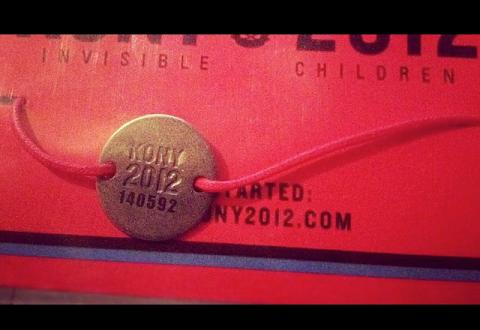Navigating the distance between thoughtful advocacy and thoughtless action

By all means engage in a thoughtful, substantive critique of the Kony2012 campaign and the discourse within which it operates, but do not for one second attempt to re-colonise the conversation by drowning out the mission for stability in the region. By Áine Carroll.
In this hemisphere at least, Africa appears as little more than a salvage operation. The currency of this discourse is the commercial humanitarian campaign which uses a blend of typecast images to convey life as an unbearable marathon of suffering and abjection: mutilated victims in nameless wars, dead-behind-the-eyes child soldiers and passive, hollowed-out mothers holding distressed, starving infants at arms-length. First-worlders gaze through this diabolical space and wonder if it really is just an allegorical holding pen for a gazillion hungry, pathetic mouths. The hot mix of distended bellies and marauding flies is combined with an ignorance of the social and political context, generating a blueprint for the misinterpretation of an entire continental situation.
Lost in the ether of this semi-reality is the elemental detail that all societies are plural, hierarchical spaces and within the humanitarian discourse there is often no mention of the four-limbed warlord, the amply-fleshed grain merchant or the overpaid bureaucrat. The middle classes and the elite, whose social presence is universal, are also conspicuous by their absence from the discussion. The NGO machine, well-oiled and with deep pockets, repossesses responsibility for a catastrophe that nobody else claims. Invisible tormentors slink off into an unknown cavern, leaving only victims. The ubiquitous crisis appears to have no beginning or end: it simply occurs.
It is within this troubling discourse that the Kony 2012 social media campaign attempted to function. The errant genius of Invisible Children’s approach was to shift the gaze from victim to perpetrator and finally there seemed to be a beginning, and a discernible end, to one of those uniquely “African” disasters. Unfortunately for its makers however, the video showed little understanding of the difference between thoughtful, sensitive advocacy and the white saviour industrial complex, causing the gaze to shift even further to the cosy relationship between compassion and privilege. Criticism rolled in at a rate of knots and the campaign eventually crashed against the rocks of its own hyperbole. This further shift represented a dramatic change in the tone and content of the conversation around global inequality and regional uncertainty and the thoughtful critiques (follow various links on this page) generated by the video have popularised the notion that the impact of a social justice campaign is equally as important as the intention which initially aroused it. Despite good intentions then, the overly-ambitious, Hollywood-esque activism depicted was little more than an ego-massage, the strategic exploitation of an awakening global consciousness among American teens. If you had to reduce the tone of the campaign into a word, that word would be narcissistic. Arguments about the inadequacy of the hungry mouth complex and about the need to respect domestic autonomous advocacy were previously restricted to circles of academic and postcolonial thought. We have Invisible Children to thank for forcing us all out of the proverbial closet.
There is however only so far you can go in this critique before you begin to sound like you are defending the indefensible, and as long as the hangover of colonial guilt and blame endures so will that stiff and awkward racial subtext that clings to every word on every related blog post. When an issue like the Kony affair arises in the future white first-worlders will again be reminded of their genetic predisposition for supremacy and natural inclination towards flamboyant ignorance. The opinions of black third-worlders will be hurriedly sought and patronisingly elevated as if somehow in danger of extinction, only for them to fade into involuntary irrelevance again when the storm passes. The best we can do is to recognise that there is such a thing as an irresolvable argument and hope that a more sensible, inclusive discourse develops in the future. The world cannot be neatly packaged into right and wrong categories and we should try to respect and understand the multiple and competing positions, or platforms, from which people think, speak and act.
In terms of the current crisis, there is no question that communities in central Africa are capable of articulating needs and supporting vulnerable communities independently, but there is definitely a question of whether the communities currently at risk have access to the resources that would allow for a broadening of efforts to eliminate the LRA. As it turns out, autonomous domestic advocates there have been saying the same thing, albeit through different channels, as Invisible Children for twenty five years: in order for their children and communities to be safe, this man must be stopped. So by all means engage in a thoughtful, substantive critique of the campaign and the discourse within which it operates, but do not for one second attempt to re-colonise the conversation by drowning out the mission for stability in the region, because somewhere, out there, in the middle of all the mess, remains a previously less visible tormentor. {jathumbnailoff}
Image top: k-ideas.
